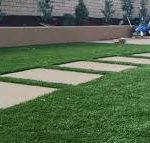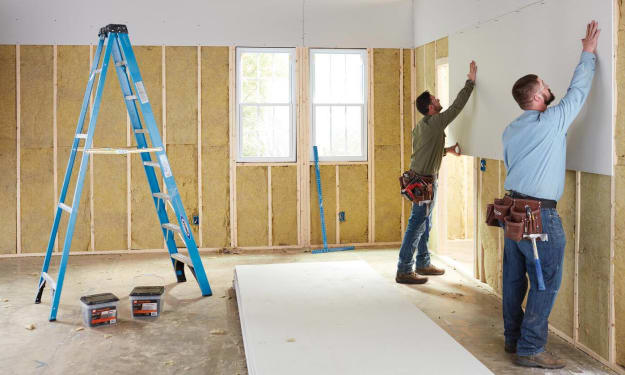Table of Contents
ToggleThe Serious Beginner’s Guide
The dream of learning piano is universal. You imagine sitting at a beautiful instrument, conjuring rich, expressive music. When you start shopping, however, that dream quickly collides with reality: a sea of glossy plastic boxes, confusing jargon, and prices ranging from fifty dollars to several thousand.
Choosing your first instrument is the most important decision you will make, as it directly impacts your motivation, technique, and progress. This isn>t just about buying a “keyboard for beginners“; it’s about investing in the right tool to learn the piano.
For anyone committed to developing real piano skills—skills that will last a lifetime and be recognized by professional music instructors, like those at The Creative Key Music Lab—a standard, lightweight keyboard simply won’t cut it. You need a digital piano.
This in-depth guide is your definitive buyer’s manifesto, explaining the crucial technical specifications, the non-negotiable features, and the best recommended models to ensure you select the perfect instrument to master the keys.
Part I: The Core Dilemma—The Keyboard vs. Piano Divide
The biggest mistake a beginner makes is buying a cheap, portable keyboard with 61 unweighted keys because “it’s cheaper.” While these are fun for experimenting with different sounds, they are fundamentally poor tools for learning piano technique.
Why a Keyboard is Not a Piano
The difference is mechanical, not just cosmetic:
- Key Count: A traditional piano has 88 keys. This is the full range necessary for playing everything from complex classical pieces to modern pop compositions. A 61-key keyboard immediately restricts the music you can play by eliminating two full octaves of the instrument’s range. If your piece requires the deepest bass notes or the highest treble notes, you’re stuck.
- Key Action: A piano’s keys are weighted by internal hammers. This physical resistance is what allows a player to control dynamics (the softness and loudness of a note) and build the necessary finger strength. A cheap keyboard uses springs, offering virtually no resistance. This teaches poor technique, leading to weak, fumbling fingers when the student inevitably tries to play a real piano.
The Rule of Thumb: If your goal is to play piano music, your instrument must have 88 keys and Fully Weighted Hammer Action. If your musical interest lies solely in playing fast synth leads or electronic rhythms, a 61-key non-weighted keyboard is fine, but you are not learning the piano.
Part II: Key Action Decoded—The Mandate for Weighted Keys
Since key action is the single most critical factor, let’s explore the options in detail. This feature alone determines whether you are practicing piano or just practicing pressing buttons.
1. Unweighted (Synth) Action: The Fastest, The Fluffiest
- Mechanism: Uses simple springs for key return. The keys are light and have a short travel distance.
- Pros: Extremely lightweight, highly portable, and affordable. Great for playing non-piano instruments like organs, synths, or for producing electronic music where dynamic control is not the primary goal.
- Cons (For Piano): This action offers no resistance, leading to a shallow, uncontrolled playing style. It completely fails to develop the essential finger strength and independence required for proper piano technique. Transitioning from an unweighted keyboard to a real piano is a jarring experience that feels like starting over. Avoid this if your goal is piano proficiency.
2. Semi-Weighted Action: The Compromise
- Mechanism: A step up from synth action, semi-weighted keys use stronger springs and some internal resistance to give a heavier feel.
- Pros: Better than non-weighted for learning dynamics. Still relatively portable and easier on the budget than fully weighted models. A decent choice for the versatile musician who needs to play synth sounds and piano.
- Cons (For Piano): The feel is still not authentic. It lacks the nuanced, heavy thump of a hammer-action key. It won’t build the same level of finger strength as a fully weighted instrument.
3. Fully Weighted Hammer Action: The Professional Standard
- Mechanism: Uses a real hammer system that mimics the internal mechanics of an acoustic piano. Keys are heavy on the downstroke, and the resistance is essential for expressive playing.
- Crucial Sub-Categories:
- Graded Hammer Action (GHA/GHS): The keys in the bass register feel heavier and require more force, while keys in the treble register are lighter. This perfectly replicates the string-size and hammer-size variation inside an acoustic piano. This feature is paramount for serious students.
- Triple Sensor/Escapement: Found on higher-end digital pianos, these features replicate the mechanical ‘notch’ felt in a grand piano keypress (Escapement) and use multiple sensors to detect when the key is pressed, allowing for extremely fast repetition of notes.
The Verdict: If you are serious about learning the piano, you must buy an instrument with Fully Weighted Hammer Action. Anything less is actively hindering your development of technique and muscle memory.
Part III: Decoding the Essential Technical Specs
Once you’ve locked in 88 fully weighted keys, you need to look at the internal digital technology that brings the sound to life.
The Sound Engine and Polyphony
A digital piano’s sound engine uses highly detailed samples of world-class acoustic grand pianos. The fidelity of these samples determines the richness of your sound.
- Sound Quality: Look for branded sound technology, such as Yamaha’s CFX Grand Piano Voice or Casio’s AiR Sound Source. These are recordings of multi-million dollar instruments.
- Polyphony: This is the note-holding capacity of the instrument. When you use the sustain pedal—which you will, constantly—every note you play continues to sound until it fades. If the limit is too low, notes will cut out prematurely, ruining the musical phrase.
- Recommendation: 128-note polyphony is the minimum standard for serious learning today. While you can technically start with 64 notes (found on older/cheaper models), you will quickly outgrow it as your playing becomes more complex.
Connectivity and Learning Tools
Modern digital pianos are interactive learning tools, perfect for the modern student receiving instruction, whether in-person or online.
- Bluetooth MIDI & Audio: This is a huge asset. Bluetooth MIDI allows your piano to wirelessly communicate performance data to learning apps (like Yamaha’s Smart Pianist or Flowkey). Bluetooth Audio allows you to stream music from your phone or tablet through the piano’s speakers, letting you easily play along to backing tracks or professional recordings.
- USB-to-Host: The standard physical connection for sending MIDI and audio data to a computer or DAW (Digital Audio Workstation) for composition or recording.
- Lesson Features: Look for a Metronome (a non-negotiable tool for rhythm) and a Duet Mode (or Split Keyboard) which divides the keys into two identical ranges, allowing a student and teacher to play the same music simultaneously without bumping shoulders.
The Pedal Unit: Single vs. Triple
Acoustic pianos have three pedals: Sustain (right), Sostenuto (middle), and Soft (left).
- Entry-Level Default: Most beginner digital pianos come with a simple, cube-shaped footswitch for sustain. This is strictly on/off and is functional but musically limiting.
- The Upgrade: Invest in a piano-style pedal (looks like a metal foot pedal). Even better: opt for a model that supports a triple-pedal unit and half-pedaling. Half-pedaling (the ability to partially depress the pedal to achieve a nuanced decay of sound) is a critical expressive technique that you should begin learning as soon as possible. Console-style digital pianos (those built into a cabinet) almost always include the full triple-pedal unit.
Part IV: Recommended Digital Pianos for the Serious Beginner
The best instrument is the one you will consistently practice on. Here are the top performers based on the criteria of 88 fully weighted keys and excellent sound quality.
| Category | Model Recommendation | Key Action Type | Ideal For |
| Best Budget Action | Roland FP-10 | PHA-4 Standard Action | Students prioritizing a realistic key feel above all else in the sub-$1000 range. |
| Best Overall Value | Yamaha P-145 | Graded Hammer Compact (GHC) | The perfect blend of authentic Yamaha piano sound and reliable weighted action. A safe, high-quality choice. |
| Best for Portability & Tech | Casio Privia PX-S1100 | Smart Scaled Hammer Action | Students needing a sleek, ultra-slim instrument that is easy to move and features high-end Bluetooth connectivity. |
| Best Budget 88-Key | Alesis Recital Pro | Fully Weighted Hammer Action | The most affordable way to get 88 fully weighted keys, often available in a value bundle for beginners. |
| Best Home Console | Yamaha YDP-145 (Arius) | Graded Hammer Standard (GHS) | The long-term investment. Comes with a furniture stand and a built-in triple-pedal unit for the most traditional experience. |
Part V: Setting Up for Success—Beyond the Box
Buying the piano is only half the battle; setting it up correctly for ergonomic practice is essential to preventing strain and developing proper technique.
1. The Right Bench
Never practice using a dining chair or a fixed stool. You need an adjustable piano bench to ensure your posture is correct. The goal is to position yourself so your forearms are parallel to the keyboard, your wrist is relaxed, and your elbows are level with the keys. This position is vital for developing speed and preventing tension.
2. The Sturdy Stand
Avoid cheap, wobbly X-stands, especially for 88-key models. A stable Z-stand or a dedicated cabinet stand (like those available for the Yamaha P-series or the Casio PX-series) provides a solid foundation, which is crucial when you start playing with force and utilizing the foot pedals. A wobbling instrument detracts from focus and compromises technique.
3. Dedicated Practice Space
The simple act of dedicating a specific, quiet corner of your home to your instrument signals commitment. Paired with a good pair of closed-back headphones, this practice space allows you to isolate yourself and focus entirely on the subtleties of your sound—a practice endorsed by every professional music educator.
Final Note: The Path to Proficiency
The journey from beginner to proficient pianist requires two things: a quality instrument and expert guidance. By choosing a digital piano with 88 fully weighted hammer-action keys, you are equipping yourself with a tool that will faithfully respond to your every command and allow you to build genuine technique.
Once you have your instrument, take the next step: formal lessons. Professional instructors provide the personalized feedback and structure you need to truly master the keyboard, ensuring you don’t just learn to play notes, but learn to make music.
To embark on your structured learning journey, connect with a dedicated music education provider like The Creative Key Music Lab. They offer tailored lessons for all ages and skill levels, ready to turn your new digital piano into a source of lifelong joy and musical accomplishment.
Invest wisely today, and enjoy the rewards of making music tomorrow!
- Arts & Style (100)
- Automobile (287)
- Business (5,716)
- Business and Entrepreneurship (166)
- Career Development (55)
- Climate & Environment (26)
- Creative (34)
- Culture (1,561)
- Beauty (284)
- Skincare (243)
- Cultural Studies (75)
- Digital Life (73)
- Energy Healing (31)
- Fashion (1,039)
- Clothing (697)
- Fashion Design (234)
- Philosophy (7)
- Morality (6)
- Religion (17)
- Sports (116)
- Beauty (284)
- Digital Marketing (344)
- DIY and Crafts (15)
- Economics (8)
- Education (1,282)
- Entertainment (198)
- Faith & Spiritual (10)
- Fashion and Beauty (155)
- Finance and Money Management (211)
- Fitness and Exercise (32)
- Food and Drink (171)
- Game (142)
- Health and Wellness (1,098)
- Home and Garden (389)
- Law (143)
- Lifestyle (1,381)
- Health (685)
- Home (389)
- Architecture (99)
- Interior Design (216)
- Rental Property (27)
- Pets (76)
- Relationships (70)
- Restaurants (19)
- Literature (7)
- Media (272)
- Packaging (41)
- Politics (1)
- Real Estate (257)
- Science and Nature (14)
- SEO (141)
- Social Media Marketing (51)
- Software Development (225)
- Sports and Fitness (44)
- Technology (851)
- Artificial Intelligence (239)
- Blockchain (61)
- Data Science (114)
- Gadgets (144)
- Security (141)
- Transportation (111)
- Travel & Tourism (759)
- Uncategorized (1,985)
- World (62)
- International (59)
- Everything You Need to Know About Professional Turf Installation in Croydon

- (no title)
- How the Ben Spies Racing Suit Jacket Combines Track Engineering with Street Comfort
- QuickBooks Payroll Not Working? Fix QuickBooks Error 3007 & Error 6138 105 – Call +1-(855)-955-1942 for Expert Help

- How Medical Billing and Coding Outsourcing Reduces Overhead Costs


How the Ben Spies Racing Suit Jacket Combines Track Engineering with Street Comfort

Best Hajj Package Safe, Easy & Fully Guided Journey

Trustworthy Best Flight to Addis Ababa Made Easy

Reliable Handyman Services in Murrieta: Your Home Repair Partner

The Future of UAE Garment Care
